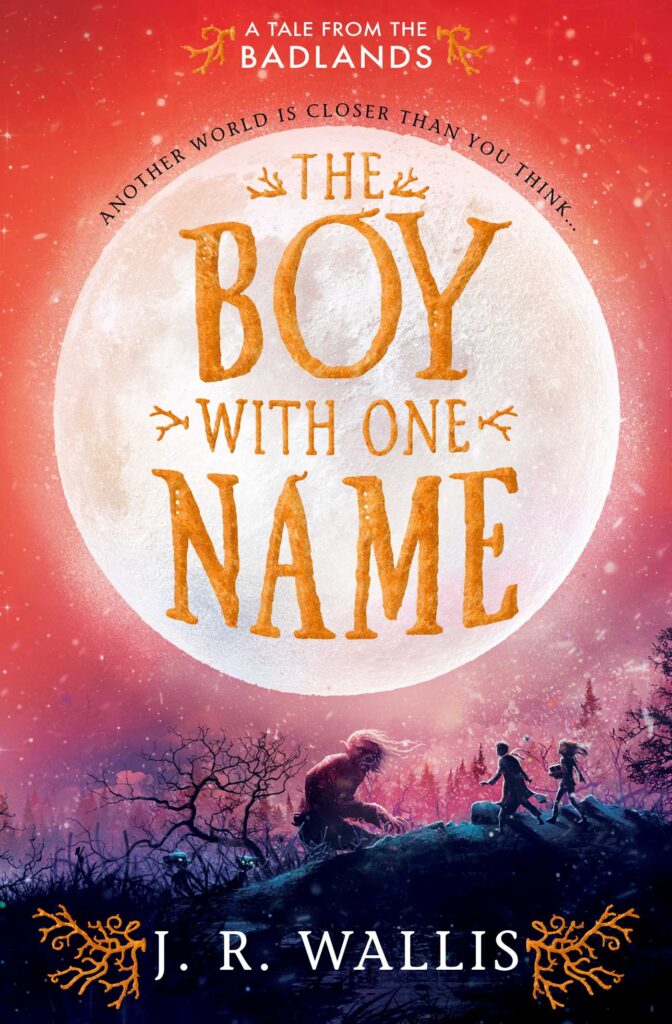Here’s a ~1000‑word exploration of The Boy with One Name, focusing on its themes, character “types,” and what sets it apart in middle‑grade fantasy:
The Boy with One Name, the first book in Tales from the Badlands by J. R. Wallis, centers on 12‑year‑old Jones—an orphan whose “one name” reflects both his identity and his longing for normalcy. Trained as an apprentice monster‑hunter by his mentor Maitland, Jones stalks ogres, trolls, and other fearsome creatures in a hidden realm within our world known as the Badlands (simonandschuster.co.uk). Despite wielding weapons and arcane knowledge, he secretly yearns to leave behind the magical and dangerous—and simply be a regular kid with a family. His single‑name status underscores this tension: it offers both mystery and incompleteness, mirroring his quest for belonging.
When an ogre hunt goes awry and Maitland is killed, Jones is forced into a harrowing journey—to discover his origins, defeat a creature beyond Maitland’s reckoning, and confront his own fears (simonandschuster.co.uk). Here he encounters Ruby—the first girl he’s ever met—who becomes his foil and partner. Ruby is outgoing, fearless, and thirsts for adventure; unlike Jones, she craves difference and wants to stand out from the ordinary. The dynamism between these “types”—Jones the reluctant hero yearning for anonymity, and Ruby the bold explorer embracing identity—drives much of the emotional energy of the narrative (readingzone.com).
1. Jones: The Reluctant Hero Seeking Identity
- Orphaned & nameless: His lack of surname, and only having “Jones,” evokes a sense of incompleteness. He must name himself—literally and emotionally—through choices that define his character.
- Monstrous quests: Despite confronting terrifying creatures, Jones battles internal monsters—grief, self‑doubt, and the question of belonging. His external battles in the Badlands mirror his internal struggles.
- Desire for normal: He wants a family, tradition, a typical childhood. Every monster slain draws him further away from ordinary, and yet brings him closer to discovering who he is.
2. Ruby: The Audacious Challenger of Norms
- Outspoken and fearless: As the “first girl” in a male‑dominated world of hunters, Ruby symbolizes inclusion, bravery, and change—refusing to hide or adapt to assumptions about her role (simonandschuster.co.uk, world-shop.scholastic.co.uk).
- Celebration of difference: She wants to be extraordinary, not conventional. Her dreams clash with Jones’s, but also ignite his potential.
- Catalyst for growth: Through her confidence, Ruby helps Jones embrace who he is, and challenges his limiting beliefs.
3. Maitland: Mentor & Traditional Guardian
- Protector archetype: A stereotypical hunter—experienced, pragmatic, yet caring. He trains Jones and keeps him alive, but his death forces Jones into adulthood prematurely.
- Echo of past: His old‑world methods contrast with the shifting Badlands, hinting at larger forces Jones must navigate once no longer under Maitland’s guidance.
4. The Badlands Creatures: Manifestations of the Unknown
- Fairytale horrors: Ogres, trolls—physical dangers and metaphors for fear, grief, loneliness.
- Themes of discovery: Each encounter tests courage, teamwork (with Ruby), ingenuity, and identity.
- World‑building: The Badlands are a “hidden part of our world,” blending the ordinary with the magical in a way young readers find both eerie and thrilling (shop.scholastic.co.uk).
5. The “One‑Name” Motif: Identity & Belonging
- Namelessness as metaphor: Jones’ single name signals a lack of belonging—no family line, no history, no place to belong.
- Naming journey: Discovering his origins and fighting alongside Ruby, he constructs a fuller sense of self.
- Universal resonance: Many readers grapple with identity—family expectations, cultural roots, social roles—and Jones’s journey speaks to that universal search.
6. Friendship & Complementarity
- Opposite forces attract: Ruby’s boldness and Jones’s caution complement one another—they learn, support, and grow through friction.
- Mutual transformation: Jones learns to embrace his identity and step forward; Ruby learns patience and humility, understanding there’s value in calm and caution.
- Found family: Their alliance underscores that family can be chosen, not just inherited—a powerful middle‑grade theme.
7. Series Potential: The Gateway to More Adventures
Critics note that The Boy with One Name sets a rich foundation for further adventures in the Badlands (eu-shop.scholastic.co.uk, falwriting.com). Jones and Ruby, having found one another—and revealed major truths about the magical world—are positioned to become a lasting duo.
Why The Boy with One Name Resonates:
| Appeal | Description |
|---|---|
| Age‑appropriate tension | Monsters and dangers exist, but violence is never gratuitous—suitable for 9–12 readers. |
| Deep character dynamics | Complex emotions (grief, fear, hope) are handled with nuance. |
| World building with depth | A hidden magical realm layered beneath reality. A glossary helps readers immerse (falwriting.com, global-shop.scholastic.co.uk, readingzone.com, en.wikipedia.org). |
| Identity exploration | Readers chart Jones’s quest for identity alongside him. |
| Action + heart | Adventure is balanced with rich emotional growth. |
Broader Reflections: “One Name” Across Literature
Though the prompt asks for different types within this story, it’s worth briefly noting how single‑name or nameless protagonists appear across children’s and YA literature:
- Peekay in The Power of One chooses a nickname to form his identity (reddit.com, en.wikipedia.org).
- In Ursula Le Guin’s A Wizard of Earthsea, knowing your “true name” is central to power over self and destiny (a possible echo in naming rituals like Jones’s metaphorical journey) (reddit.com).
- Some tales feature boys with no given names, who name themselves during quests—reinforcing the universal theme of identity creation.
In Conclusion
The Boy with One Name excels as a coming‑of‑age fantasy. Its protagonist Jones is a “one‑name” type yearning for ordinariness, which he finds only through extraordinary challenges—with the help of Ruby, a bold ally, and the memory of his mentor Maitland. The denizens of the Badlands, the trials of monster‑slaying, and the internal struggles of belonging and identity all weave together into an engaging journey.
At just under 370 pages, it delivers adventure while maintaining emotional depth and thematic resonance for middle‑grade readers .
If you’re interested in a full breakdown of Jones’s character arc, a thematic comparison to Earthsea, or suggestions for series similar in tone or structure, I’d be happy to dive deeper!
